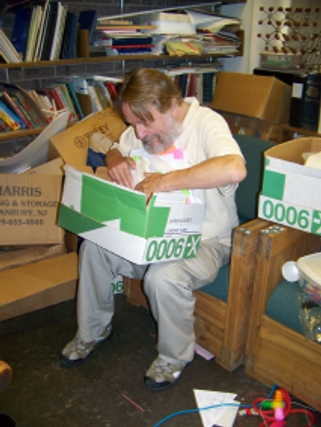A Math Paper by Moscow, U.S.S.R.
I’m not kidding; there is such a paper. It is titled, “A Headache-causing Problem” and its authors are Conway (J.H.), Paterson (M.S.), and Moscow (U.S.S.R.). The acknowledgements in the paper shed some light on how Moscow became a mathematician:
The work described here was carried out when the first and second named authors enjoyed the hospitality of the third. The second and third authors are indebted to the first for expository details. The first and third authors gratefully remark that without the constant stimulation and witty encouragement of the second author this paper
[The next part was meant to be on the following page, Conway told me, but the editor missed the humor and just continued the sentence…]
was completed.
As a consequence of this joke, Moscow is envied by many mathematicians as it has an Erdős number of 2. Now wait for a couple of hundred years, and Moscow will be the only living mathematician with an Erdős number of 2. I can just imagine future mathematicians trying to persuade Moscow to coauthor papers with them, because this will be the only way for them to score an Erdős number of 3.
Even though I lived there for 30 years, I had no idea that Moscow had a talent for math. Of course, this talent only emerged when Moscow was more than 800 years old.

This wonderful paper by Moscow was very difficult to find. It was presented to Hendrik W. Lenstra on the occasion of his doctoral examination. It was published in 1977 in a book titled “Een pak met een korte broek,” which in Dutch means, “A Book in Short Trousers.”
I tried to find it on the Internet — it wasn’t there. I asked John Conway — it took him quite some time to find it. Here is the picture of John Conway searching for a headache-causing problem. Luckily for you and me, he found it. To save you from another headache, I am uploading the scan of it in pdf format here: A Headache-causing Problem by J.H. Conway, M.S. Paterson, and U.S.S.R. Moscow.
I hope that Moscow will not start complaining that I never asked its permission to post the paper. Some might argue that Moscow, U.S.S.R., doesn’t exist anymore, but I would counter that it exists, but with a changed name. If Moscow tries to sue me, I hope it’s not because it is still bitter that I left it behind in 1990.
Hey Moscow, it’s time we were friends again. Would you like to co-author a paper with me?
Share:
David Wilson:
I have the distinction of being the least-deserving person to have Erdos number 2. I co-authored “The 3x+1 Problem and Finite Automata”, which is to say, Jeff Shallit wrote the paper in acceptable mathematical language and appended my name for having noticed the rather modest result. So wow, I’m right up there with Moscow.
16 February 2009, 9:42 amArjan Feenstra:
Nice anecdote, but shouldn’t it be “A suit with short trousers”?
8 August 2009, 7:24 pmEddie Hill:
Interesting story, I think the guy in the pic needs a change of clothes and a shave, oh, somebody give him a quarter, please!!
21 November 2009, 1:41 pmMatthias:
it should indeed be “a suit with short trousers”
9 January 2010, 6:32 pmJeff:
For David Wilson. I once came up with a curve while doodling. Before attempting a proof I searched for a prior result, and found it. It was found by a highschool student back in 80’s as I recall. His teacher wrote up the proof and published it, but did not include his name as coauthor, rather the teacher just gave him credit for the idea. I take issue with the ethics here.
There are three main parts to a mathematical discovery,
1. The idea.
2. The proof strategy.
3. Denoting items 1 and 2 in a language by which can all negotiate the truth, mathematical discourse.
I say no item is no more important than another. So Dr. Shallit took the ethically right action. As for your result, the great Erdos said if a result is new and correct, publish it. In other words, don’t judge a result or compare it to another. Is the fundamental theorem of calculus really more important of a result than say 1+1=2?
12 June 2011, 5:01 pmMarco Fulvio Barozzi (Popinga):
Gamow and his α-β-γ Theory, Geim and his hamster Tisha: is fake authorship a speciality of former Soviet Union born scientists? Thanks for this article, which I cited in my blog. 🙂
1 November 2012, 12:52 pmTanya Khovanova's Math Blog » Blog Archive » Weird Ways to Improve Your Erdős Number:
[…] post about an amusing fact: John Conway put Moscow, the former capital of the USSR, as a coauthor: A Math Paper by Moscow, USSR. Thus, Moscow got an Erdős number 2, thanks to Conway’s Erdős number 1. At that time, my […]
29 March 2022, 4:10 pm